If you discover in the vegetable garden that the cabbage leaves are eaten off, several pests come into question. In this article we tell you how to protect cabbage and reduce feeding damage.
Contents
- 1 Cabbage Stem Flea Beetle
- 2 Bright-line Brown-eye
- 3 Large cabbage white butterfly
- 4 Control
- 5 Appearance
- 6 Control
- 7 Cabbage Moth
- 8 Control
- 9 Cabbage shoot weevil
- 10 Control
- 11 Snails
- 12 Birds
- 13 Frequently asked questions
- 14 What other pests prey on cabbage ?
- 15 Does mixed culture protect cabbage from pests?
- 16 Can a fleece also be used to protect the vegetables?
- 17 Author
Cabbage Stem Flea Beetle
The Cabbage Stem Flea Beetle (Psylliodes chrysocephalus) is one of the most common pests of cabbage plants. It is not choosy about its food and eats cabbage leaves as well as those of other cruciferous plants such as radish or radish.
Appearance

- 2 to 4 mm long
- blue metallic color
- dot stripes on the elytra
- clearly visible antennae
Combat
- vegetable nets
- mulching with plants containing pyrethrum (used for insecticides)
- for example tansy (Tanacetum vulgare) or motherwort (Tanacetum parthenium)
Tip: When choosing the right protective net, always pay attention to the correct mesh size! For ground fleas, it should be a maximum of 0.8 mm
Bright-line Brown-eye
Bright-line Brown-eye – (Lacanobia oleracea) is a butterfly whose caterpillars have a wide food spectrum. In the garden, they prefer to feed on various types of cabbage.
Appearance
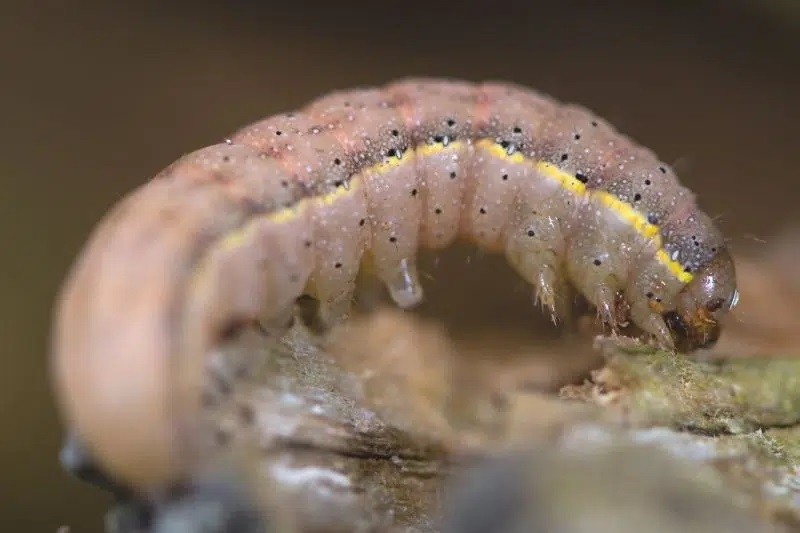
- adult moth brown
- caterpillar period from August to October
- caterpillars 45 mm long
- green, gray or brown ground color, rarely pink
- small black spots
- yellowish lateral line
Large cabbage white butterfly
Control
- pheromone traps to attract adult moths
- in case of low infestation collect caterpillars
- in case of heavy infestation use nematodes (from specialized trade)
- weaken caterpillars and thus reduce harmful effects
- Large cabbage white butterfly
If cabbage leaves are eaten off, the great white butterfly (Pieris brassicae) is often responsible. It is one of the most feared pests of cabbage plants. The adult moth lays its eggs directly on the host plants, which include cabbage .
Appearance

- caterpillar period from May to October
- up to 40 mm long
- yellowish-green ground color
- black spots
- light bristly pubescence
Control
- Collect caterpillars quickly
- Use cabbage whitefly ichneumon wasp (Cotesia glomerata)
- Protect new cabbage plantings with nets
Note: Cabbage whitefly caterpillars are slightly poisonous and should therefore only be handled with gloves. In addition, they should not be fed to chickens
Cabbage Moth
The cabbage moth (Plutella xylostella) or its caterpillars are especially a problem in regions where many cruciferous crops are grown. Since it has developed resistance to most insecticides, control is difficult.
Appearance
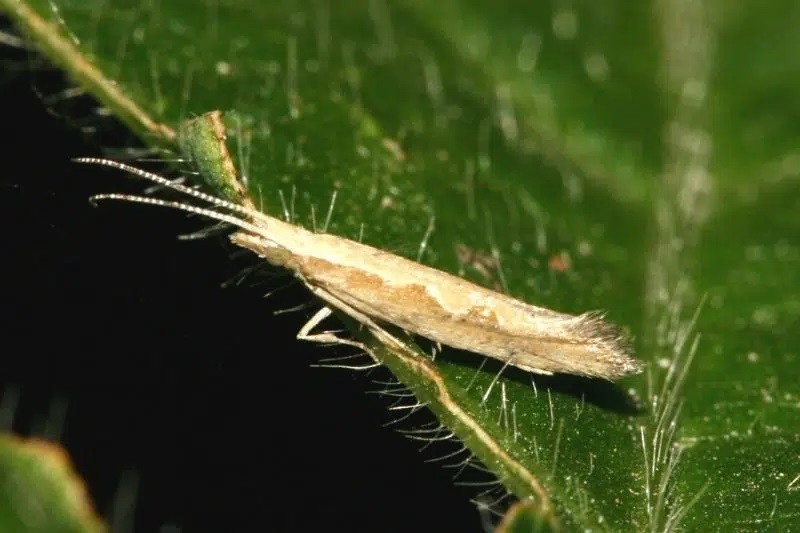
- Moth with brownish ground color
- caterpillars about 8,5 mm long
- body green
- head black or brown
Control
- Set up pheromone traps to monitor pests
- collect caterpillars
- Encourage natural enemies
- for example ichneumon wasps (Diadegma semiclausum) and brackish wasp (Cotesia plutellae)
Tip: Larvae also eat cabbage leaves left on the bed. To prevent spread, shred the cabbage leaves so they compost more quickly, depriving the moths of food.
Cabbage shoot weevil
Infestation by the spotted cabbage shoot weevil (Ceutorhynchus pallidactylus) is often not detected until later, when the plants are already too badly damaged. If cabbage leaves are eaten away, you should therefore react quickly, because beetles and larvae mainly eat holes in the roots, which can lead to thickened areas and later to puny growth.
Appearance
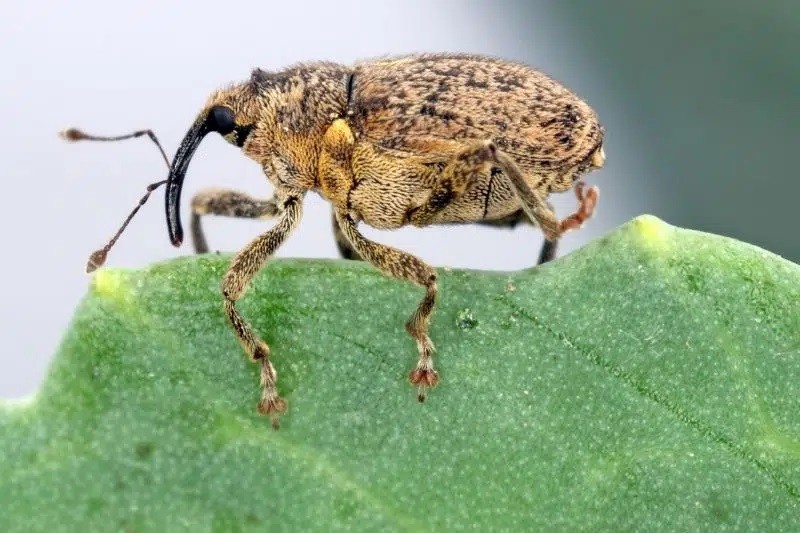
- 2,5 to 3,2 mm long
- gray, spotted ground color
- light spot on the elytra
- strong scaling
- distinctive “proboscis
Control
- set up yellow traps in spring to control infestation
- caterpillars and eggs difficult to control
- Encourage natural enemies
- for example ichneumon wasps (Tersilochus obscurator) or ground beetles
Note: We vehemently discourage the use of insecticides. If at all, we recommend using only neem or canola oil-based sprays in well-dosed amounts
Snails
Various species of snails occasionally eat the young leaves of cabbage. Protect young vegetable plants with a slug fence. If you want to avoid using chemical middles in the garden, lay out boards between the cabbage plants. The slugs will hide under them and you can collect them.
Birds
It happens from time to time that birds attack vegetable plants. Especially in early spring, when the first cabbage is planted, the large leaves are an attractive food source for various birds.
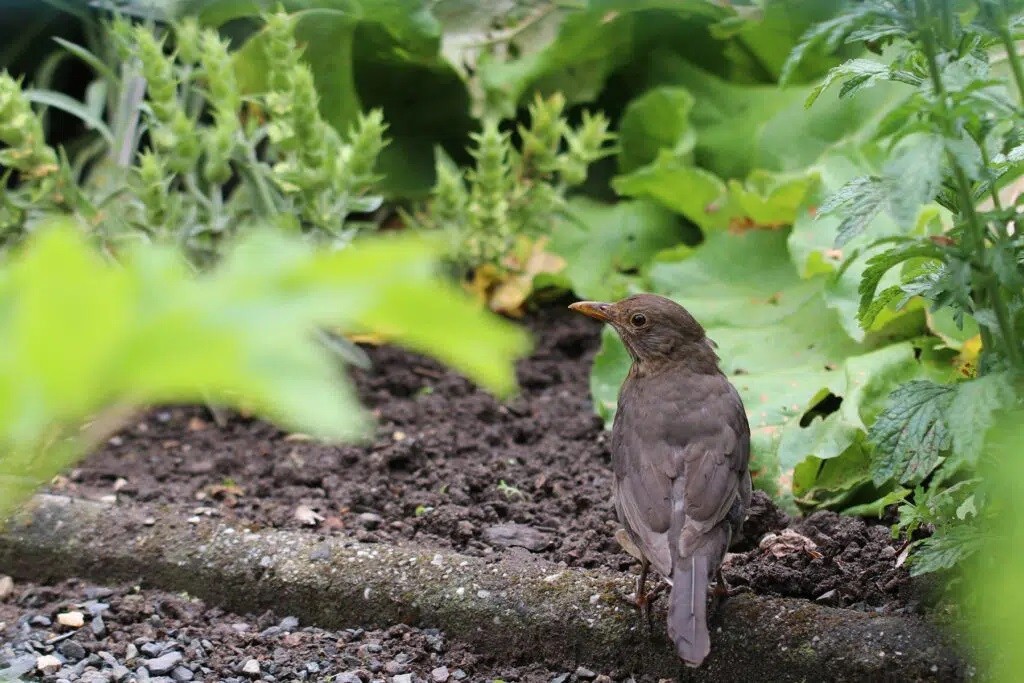
These bird species eat cabbage leaves:
- Blackbirds (Turdus merula)
- sparrows (Passer domesticus)
- Pigeons (Columbidae)
A sure sign that the damage is bird-caused is leaf debris left on the ground. Occasionally, they will even simply rip freshly planted cabbage plants out of the ground.
Combat
You can try to drive the birds out of the garden using a variety of measures:
- hang luminous, flashing materials (CDs, aluminum foil) near affected plants.
- install wind chimes or small wind wheels
- put up bird dummies
- Put out bird protection nets (larger mesh size possible)
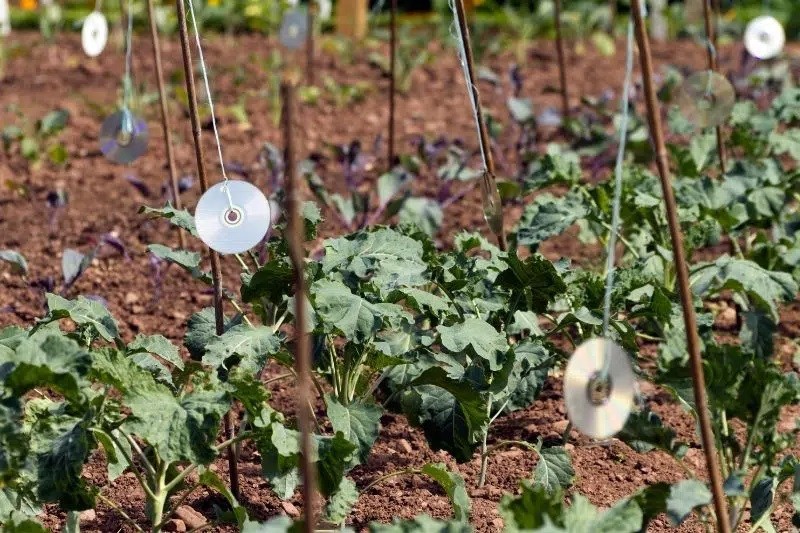
Tip: Birds are creatures of habit. So try changing the positions of the aids periodically to disrupt the habituation effect.”
Frequently asked questions
What other pests prey on cabbage ?
The cabbage moth scale insect (Aleyrodes proletella), often called “whitefly” in common parlance, likes to suck on the plants and thus weaken them. It also secretes honeydew, which in turn attracts sooty mold that gradually spoils the vegetables. Again, use protective nets and encourage natural predators, such as ichneumon flies (Encarisa tricolor) and ladybugs (Clitostethus arcuatus), by keeping your garden natural.
Does mixed culture protect cabbage from pests?
In any case, the cultivation of cabbage in a mixed culture is preferable. In this way, aromatic plants such as tomatoes or celery distract the pests from the actually preferred cabbage plants. However, pest infestation of cabbage cannot be completely ruled out by mixed cultivation.
Can a fleece also be used to protect the vegetables?
No, a garden fleece is usually too dense and thus too little light permeability. This can lead to poor growth of cabbage, or rather, that it does not form a thickened shoot axis.

